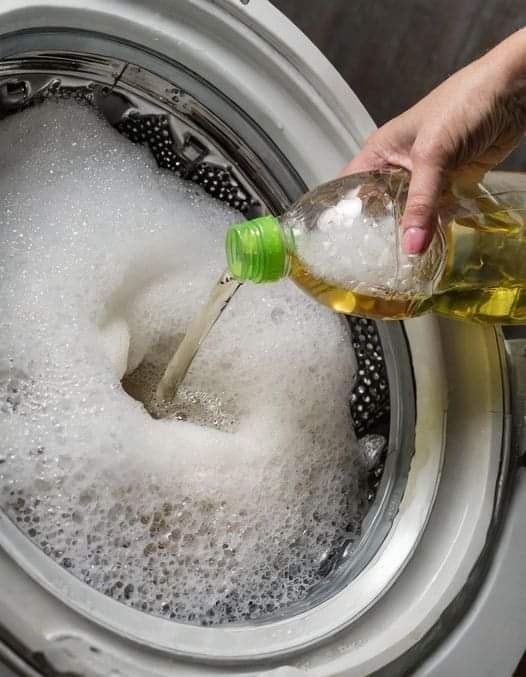Distilled white vinegar might not look like much sitting in your pantry, but this humble household item can do far more than flavor your food or clean windows. One of its most underrated uses? Enhancing your laundry routine. From whitening your whites and softening towels to eliminating stubborn odors and cutting static cling, vinegar is a multi-purpose powerhouse that can make your laundry fresher, softer, and more comfortable—all while being eco-friendly and wallet-friendly. If you’ve never tried it in the wash before, now’s the time to start. Here’s how a simple cup of vinegar can revolutionize the way you do laundry.

Let’s begin with a common laundry challenge: keeping whites bright and colors looking fresh. Over time, detergents—whether powder or liquid—can leave behind a soapy residue that dulls fabrics and makes whites look gray or yellowed. The acidic nature of vinegar helps dissolve this buildup, restoring the natural brightness of your clothing and linens. Adding one cup of distilled vinegar to the rinse cycle can break down those layers of detergent and give your clothes a visibly cleaner, fresher appearance without the use of bleach or other harsh chemicals.
If odors are an issue, vinegar has you covered there too. Some smells are just tough to get rid of—think sweaty gym clothes, campfire smoke, mildew, or even food odors. Even after a standard wash, they tend to linger. That’s where vinegar comes in handy. Pouring a cup into your washer’s rinse cycle can neutralize and remove those persistent smells. Thanks to its deodorizing properties, vinegar breaks down odor-causing bacteria, leaving your clothes smelling genuinely clean without the use of overpowering fragrances. And don’t worry—the vinegar scent doesn’t linger on your clothes once they’re dry.
Fabric softeners are often marketed as the key to fluffy towels and soft clothing, but most are packed with synthetic fragrances and chemicals that can irritate sensitive skin or trigger allergies. If your laundry feels stiff or scratchy, vinegar offers a gentler alternative. Just one cup added during the rinse cycle can help relax fibers, resulting in softer towels, T-shirts, and sheets—no synthetic perfumes required. Plus, it’s safe for delicate skin, making it a great option for families, especially households with babies or individuals with sensitivities.
Static cling is another laundry issue we all deal with, especially during dry winter months. The crackling sound when you pull socks from a fleece blanket, or the annoying zap when folding clothes, can be frustrating. Luckily, vinegar helps here too. When added to your rinse cycle, it reduces static buildup by helping fibers release their charge more easily. That means fewer socks stuck together, fewer surprises from static shocks, and less reliance on dryer sheets.
One of the biggest advantages of using vinegar in your laundry is that it’s completely natural and non-toxic. Many commercial laundry products—from detergents and fabric softeners to dryer sheets and stain removers—contain ingredients that can be irritating or even harmful with long-term exposure. If you’re trying to reduce your use of synthetic chemicals in your home, vinegar is a simple, safe swap. It’s biodegradable, inexpensive, and widely available, making it a practical addition to an eco-conscious household.
If you’ve already been using vinegar to clean around your home—like in the kitchen or bathroom—you know how effective it is at cutting through grime. The same principle applies in your laundry room. Once you start using it regularly in your laundry, you’ll likely notice that your clothes feel softer, look brighter, and smell cleaner. It’s such a simple trick that you might wonder why you didn’t start doing it sooner.
To make it easy, keep a jug of distilled white vinegar right next to your washing machine. That way, you’ll remember to add a cup during the rinse cycle when you’re doing laundry. Whether you’re dealing with funky towels, dingy whites, or just want a softer finish without synthetic fragrances, vinegar is a reliable and natural solution. It’s a tiny change that brings big results—and your laundry will thank you for it.





